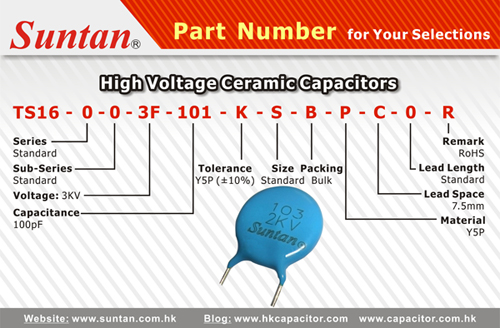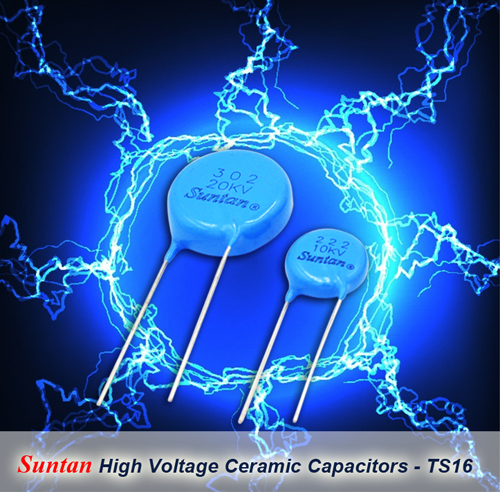Como encomendar Suntan TS16 Alta Tensão Capacitores de cerâmica
Suntan Technology Company Limited
---All Kinds of Capacitors
| Product Category | Product Description |
| High Voltage Ceramic Capacitors | High Voltage Ceramic Capacitors |
| How to Order Suntan Products | |
| Example: P/N | Example: Item Description |
| TS16003F101KSBPC0R | C-Cap 100pF 3KV +/-10% Y5P P:7.5mm RoHS |
| Series | Sub- | Voltage | Capacitance | Tolerance | Size | Packing | Material | Lead Space | Lead Length | Remark | |
| TS16 | 0 | 0 | 3F | 101 | K | S | B | P | C | 0 | R |
| série: | TS16 |
| Sub-Series: | 0(Standard) |
| tensão: | 1K~6KVDC (Higher than 6KV, specially on request) |
| capacitância: | 100pF – 10,000pF |
| tolerância: | Y5P (±10%), Y5U (±10%, ±20%), Y5V (±20%), SL (±5%, ±10%), NPO (±0.5pF, ±10%) |
| tamanho: | S(Standard) |
| embalagem: | B(Bulk) |
| material: | P(Y5P) |
| Chumbo Space: | B(5.08mm), C(7.5mm), D(10mm) |
| Chumbo Duração: | 0(Standard) |
| observação: | R(RoHS) |
Mais produtos mais detalhes consulte:
http://www.capacitors.hk/Ceramic-Capacitors/TS16.html
Mais detalhes do número de peça por favor, verifique: http://www.capacitors.hk/guide.pdf


